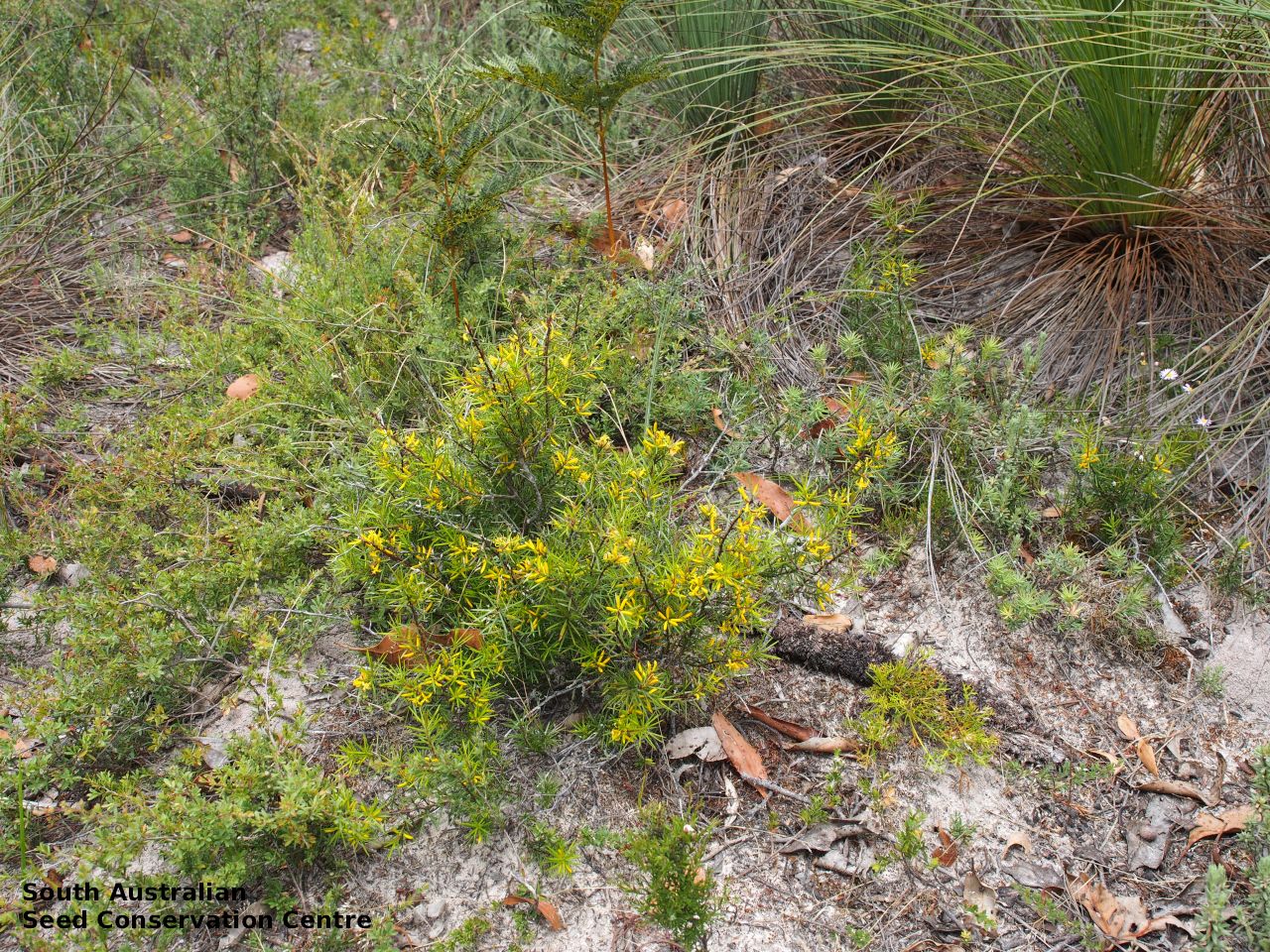
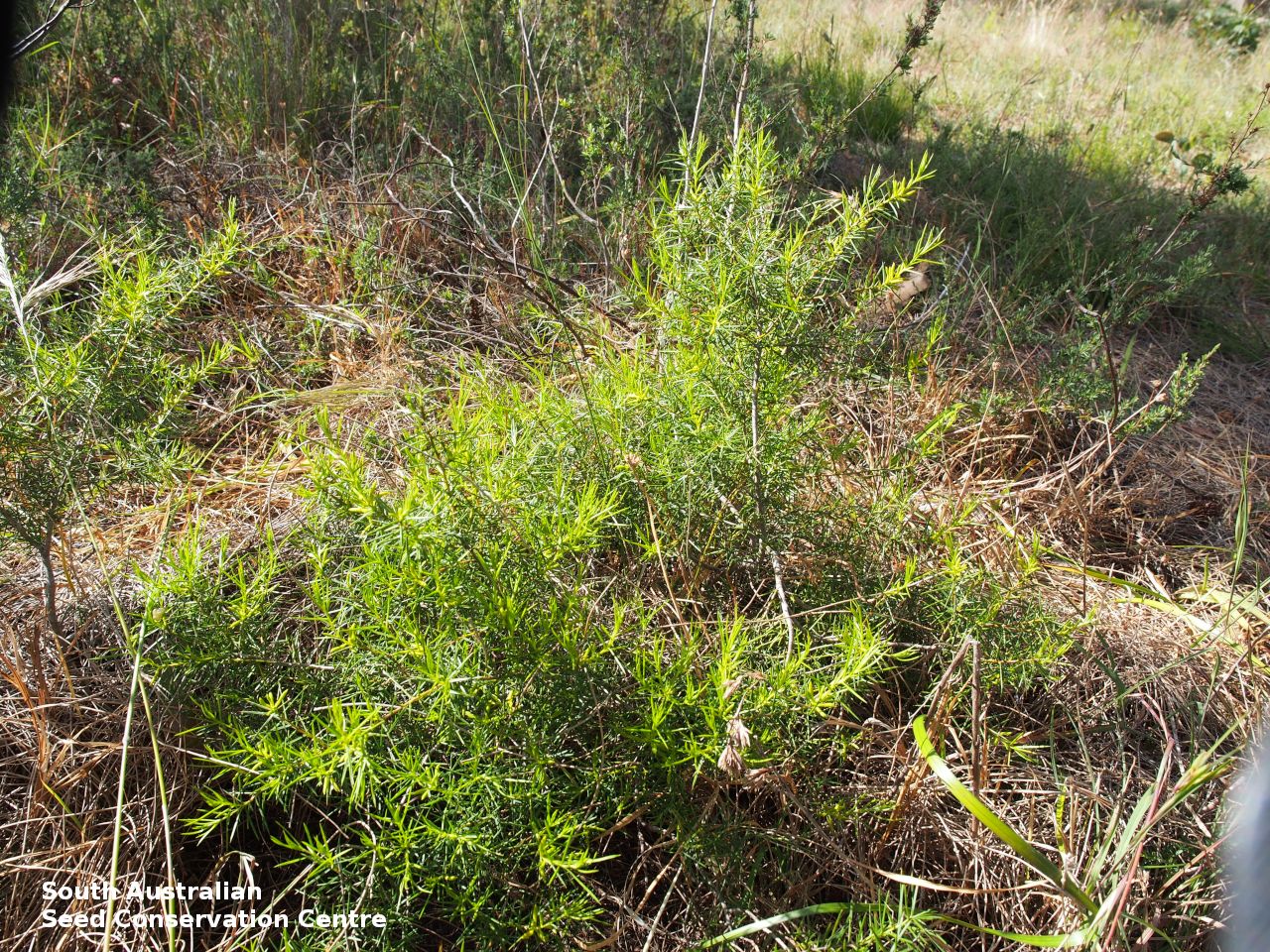
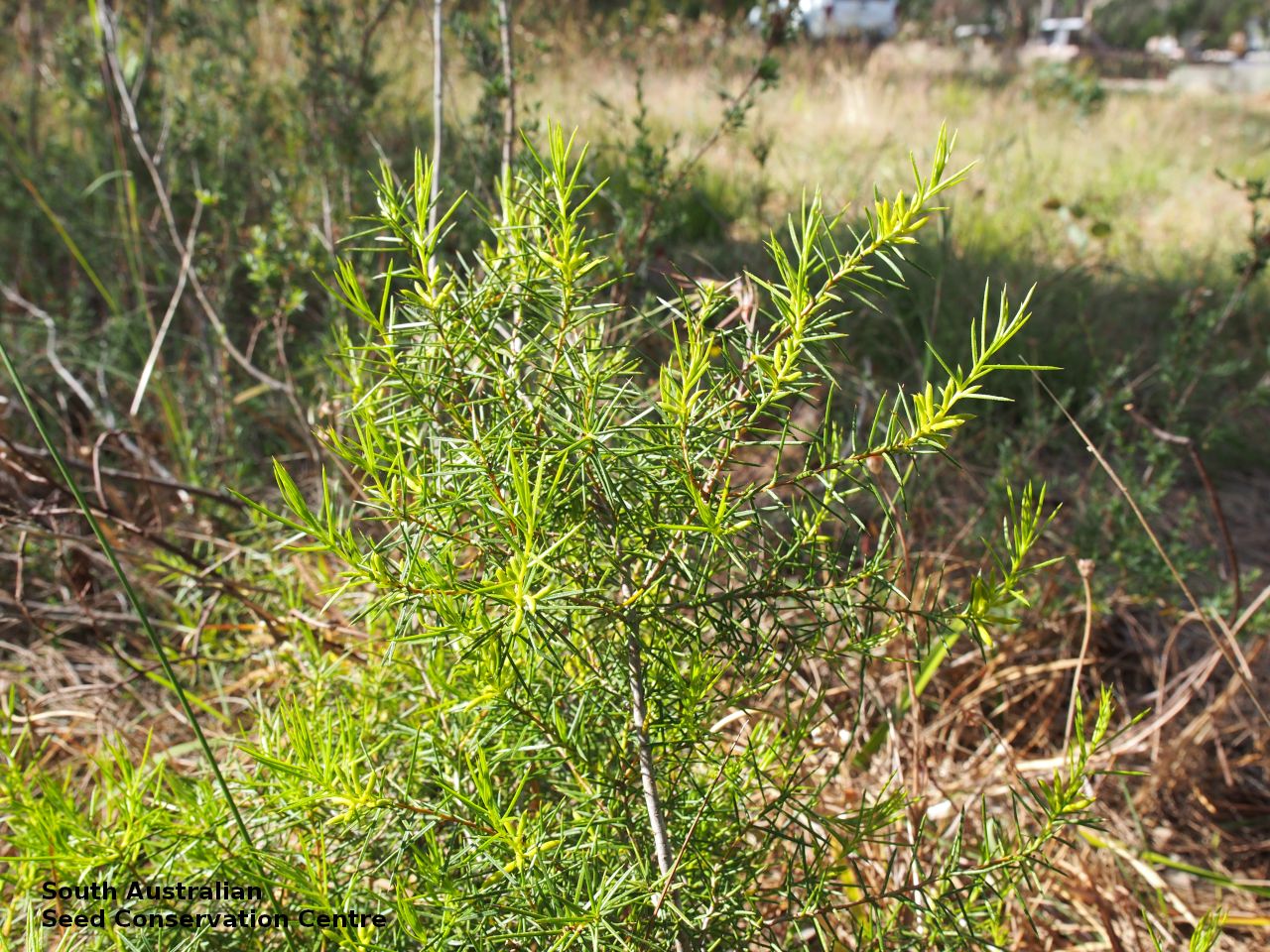
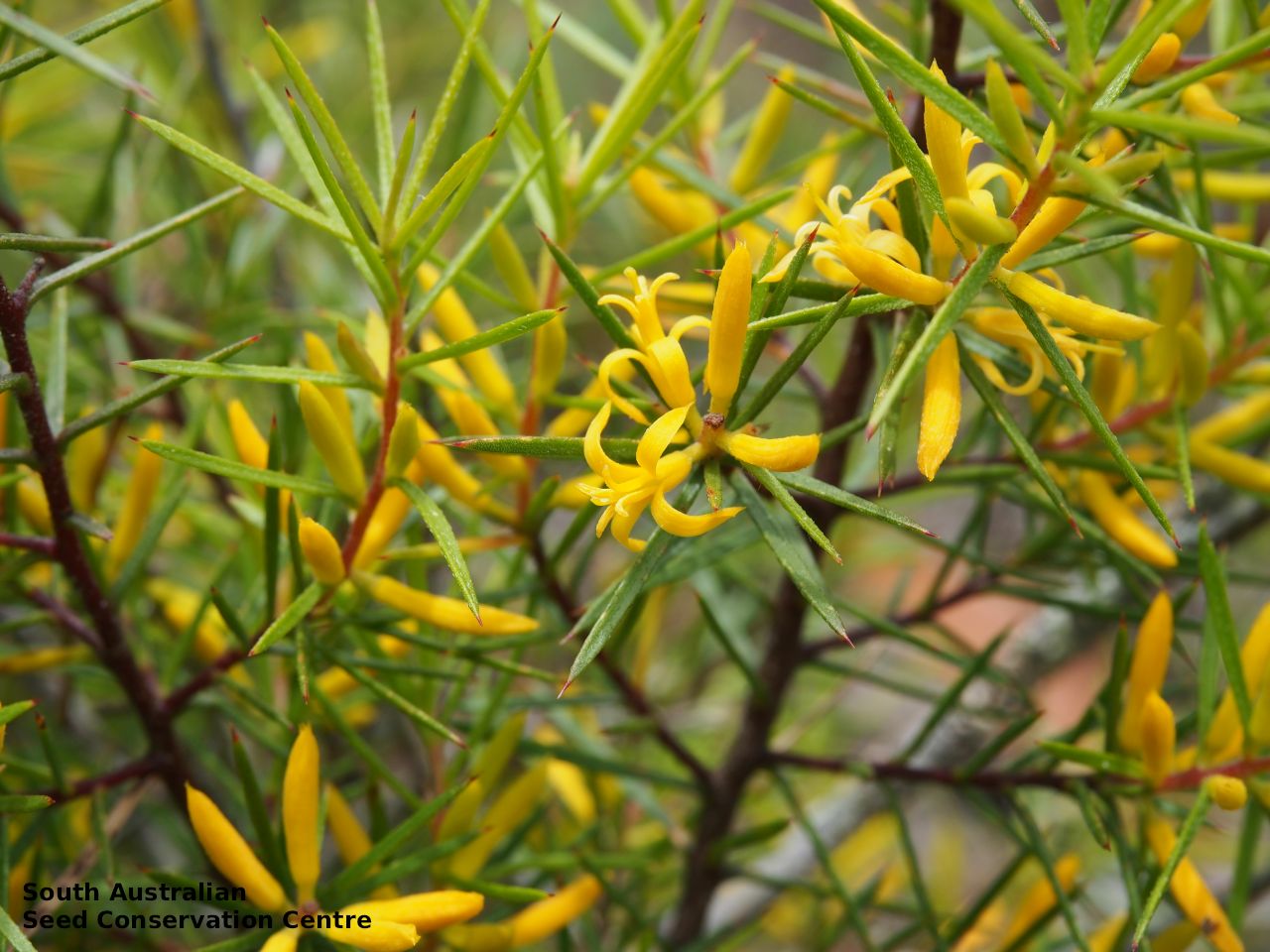
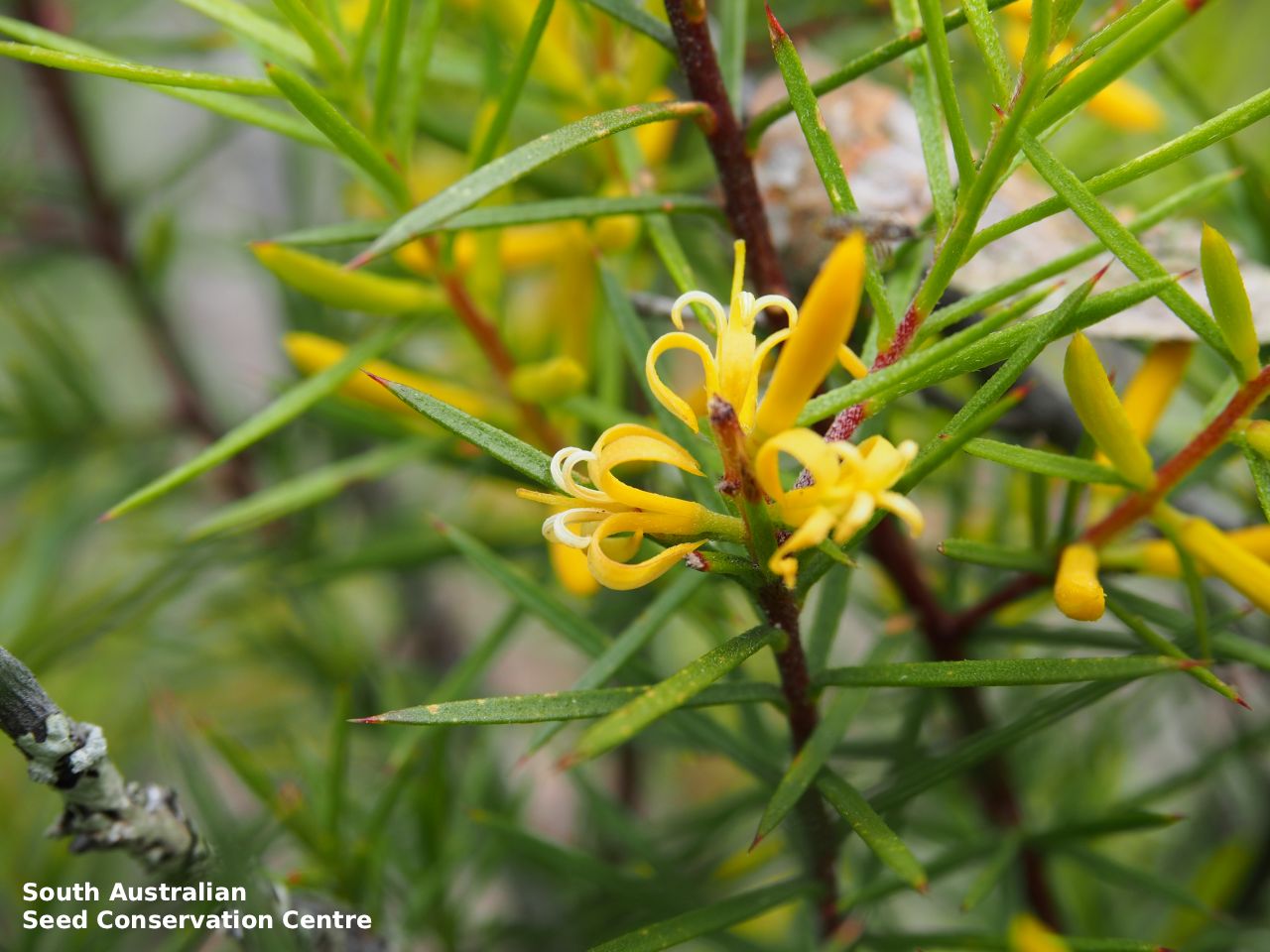
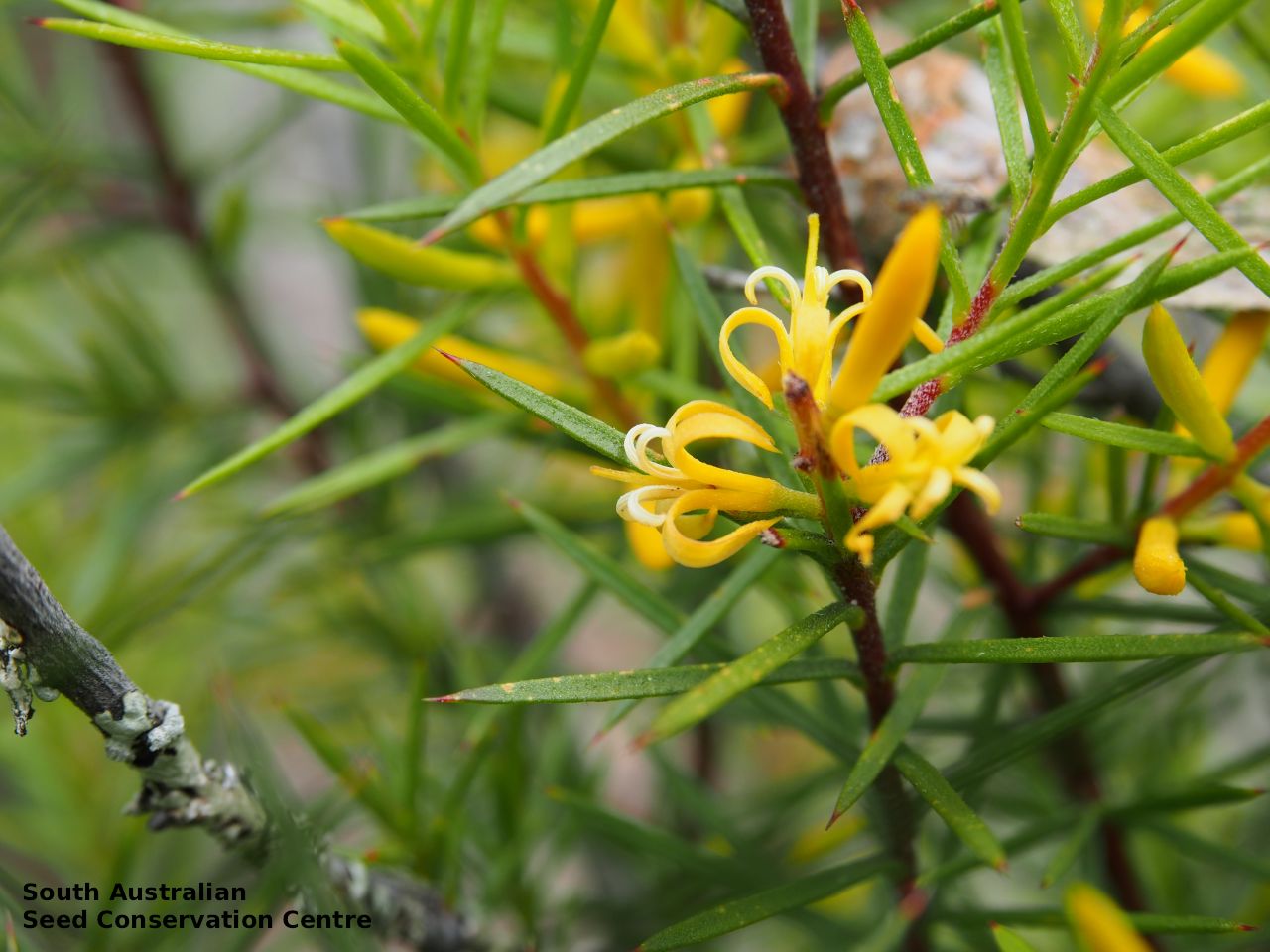
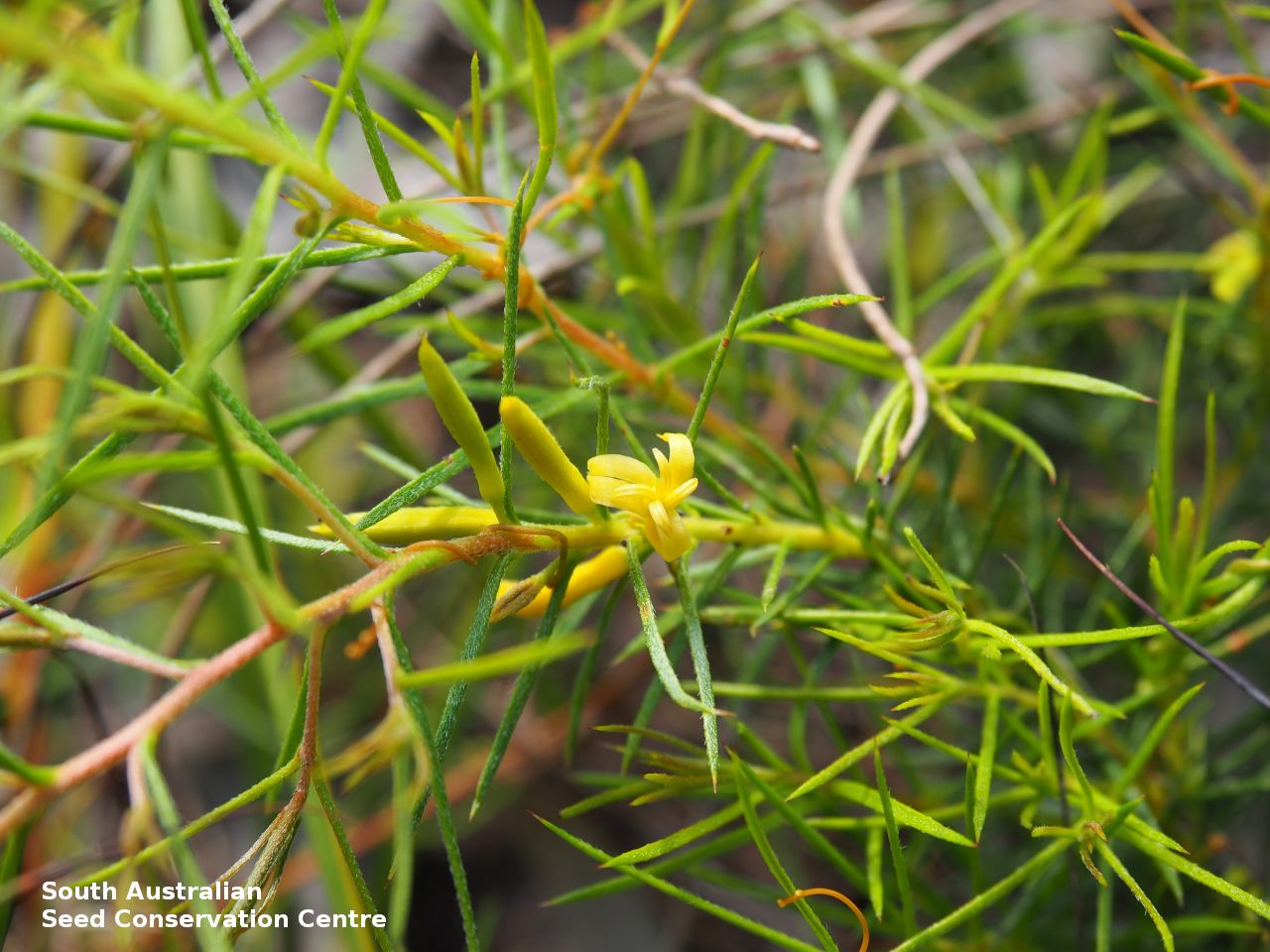
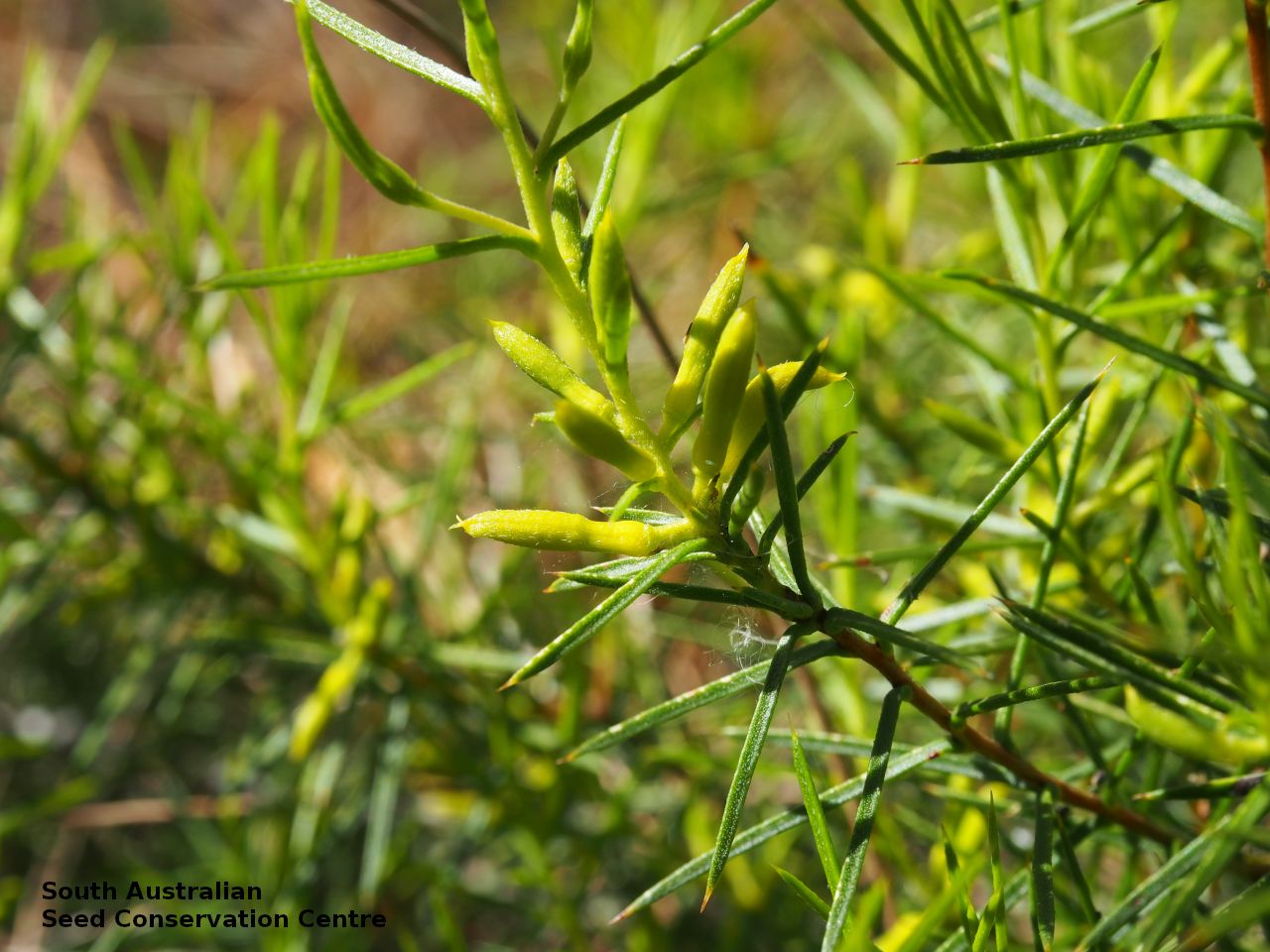
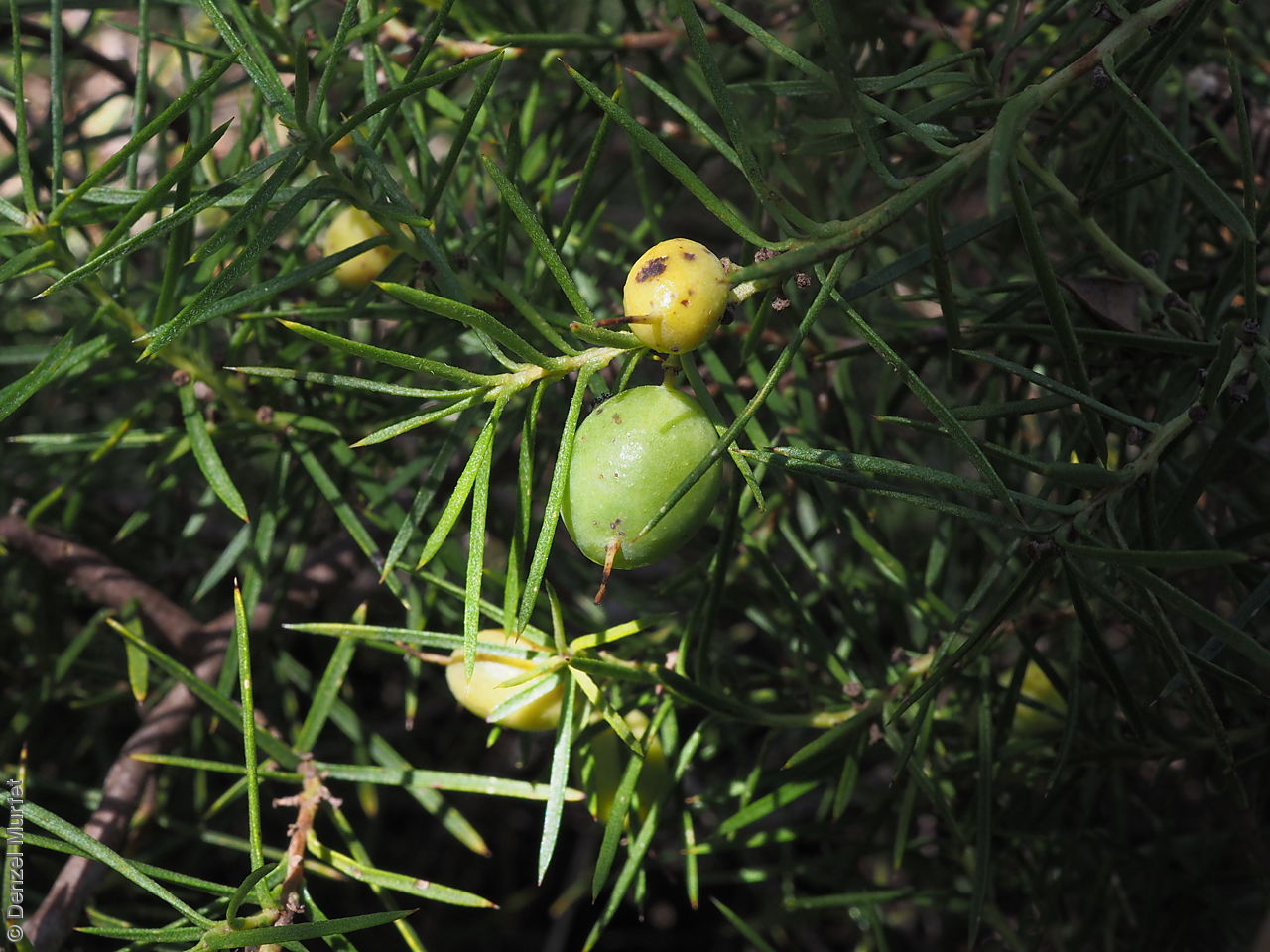
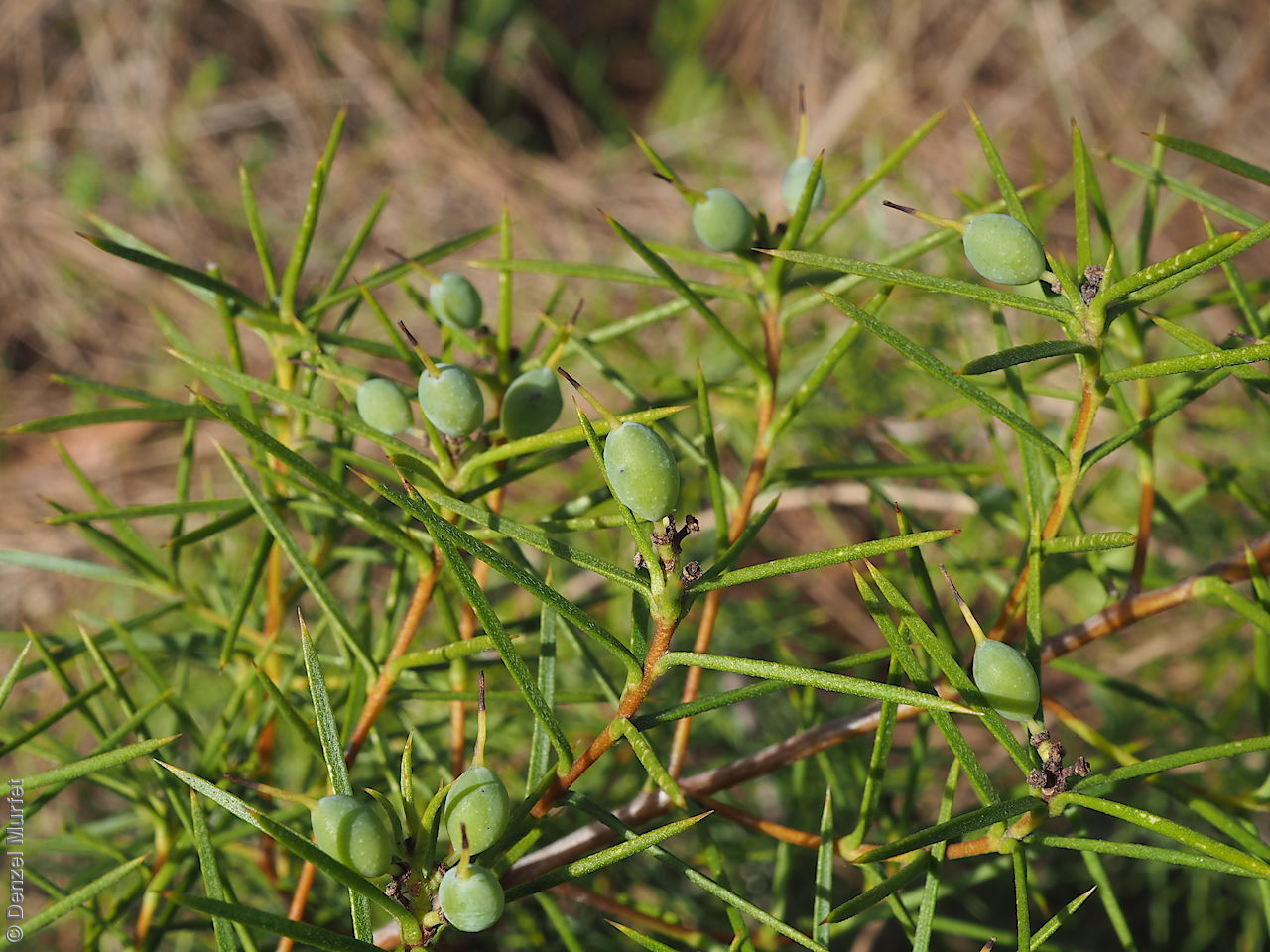
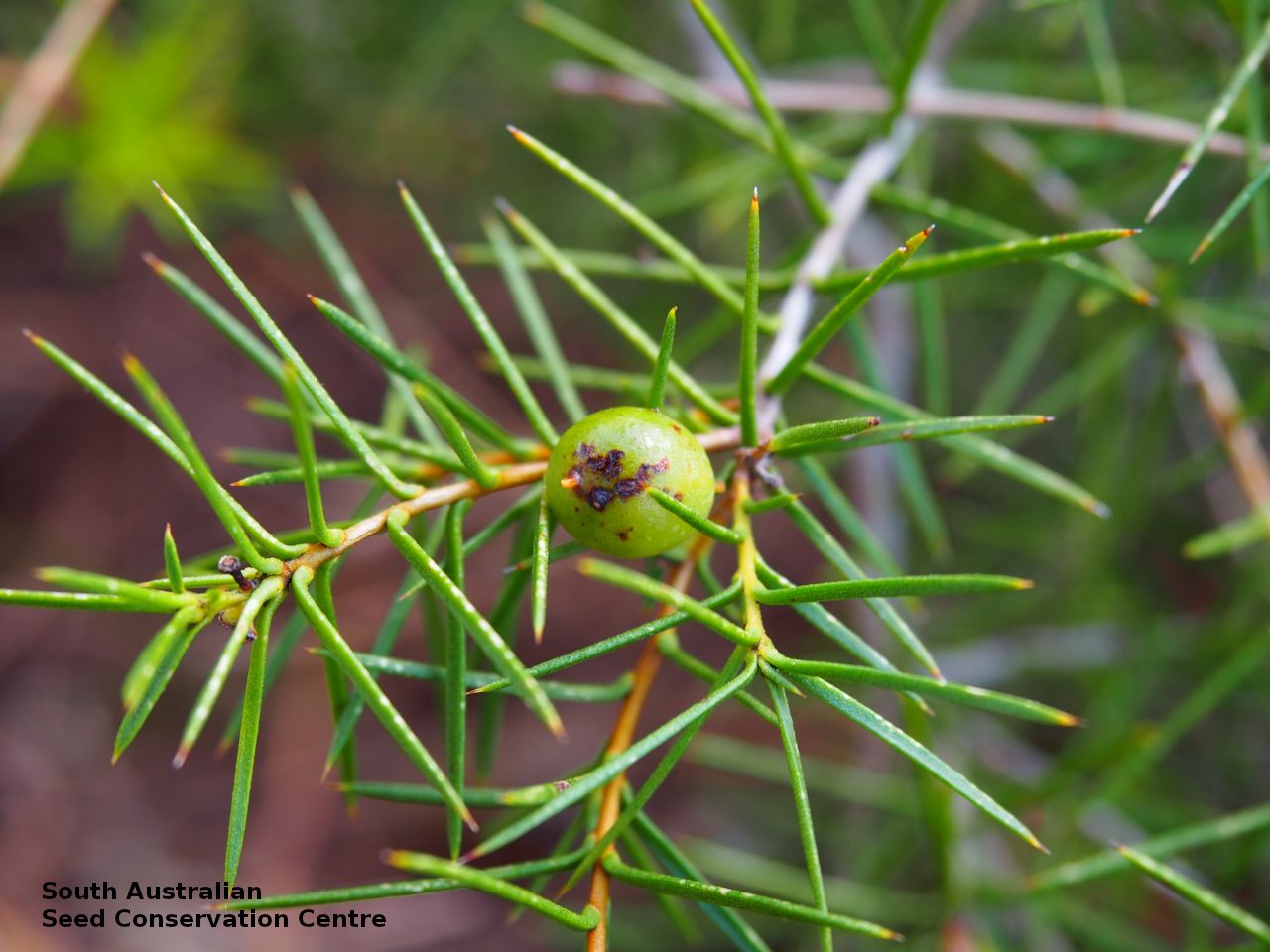
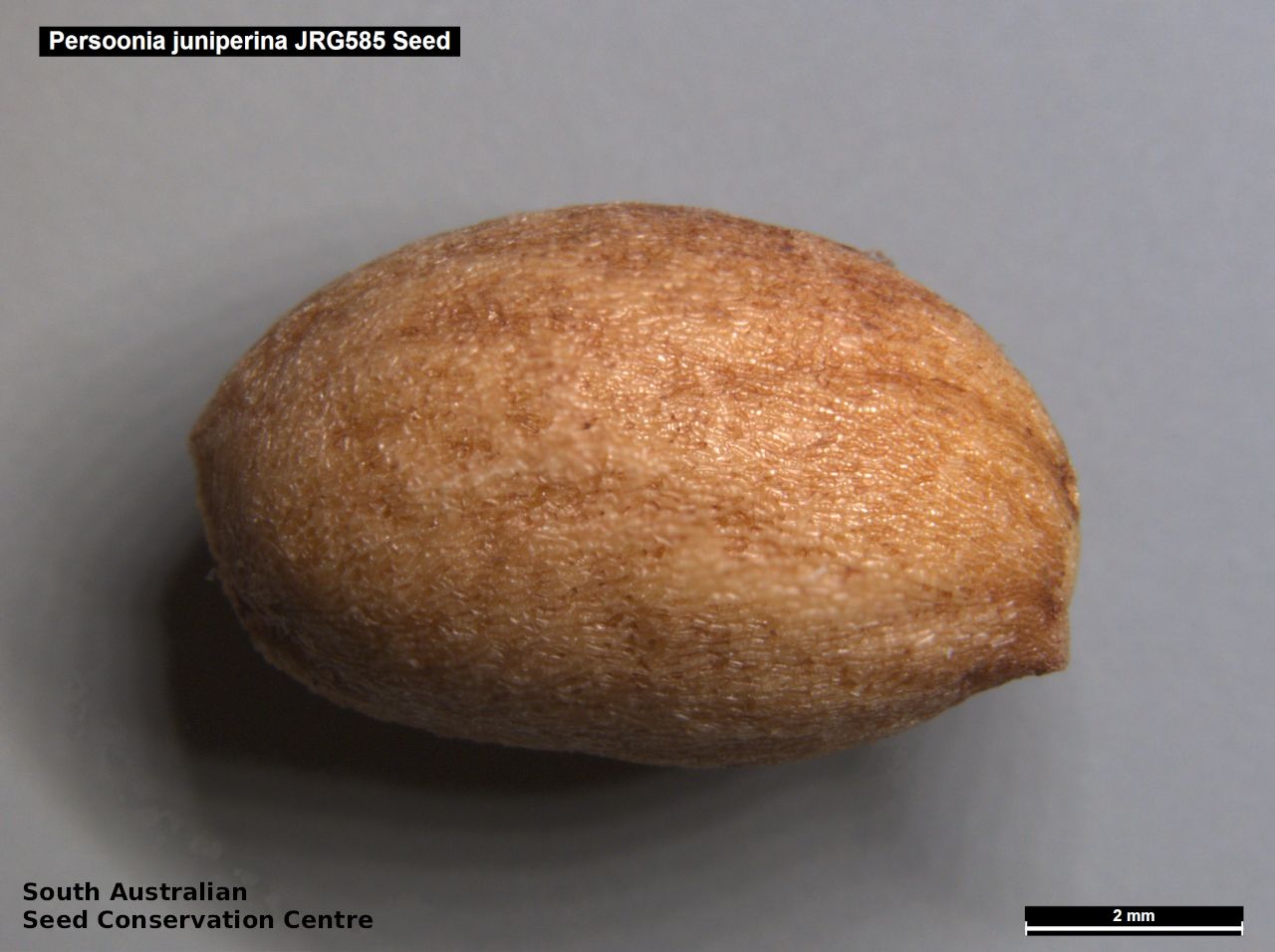
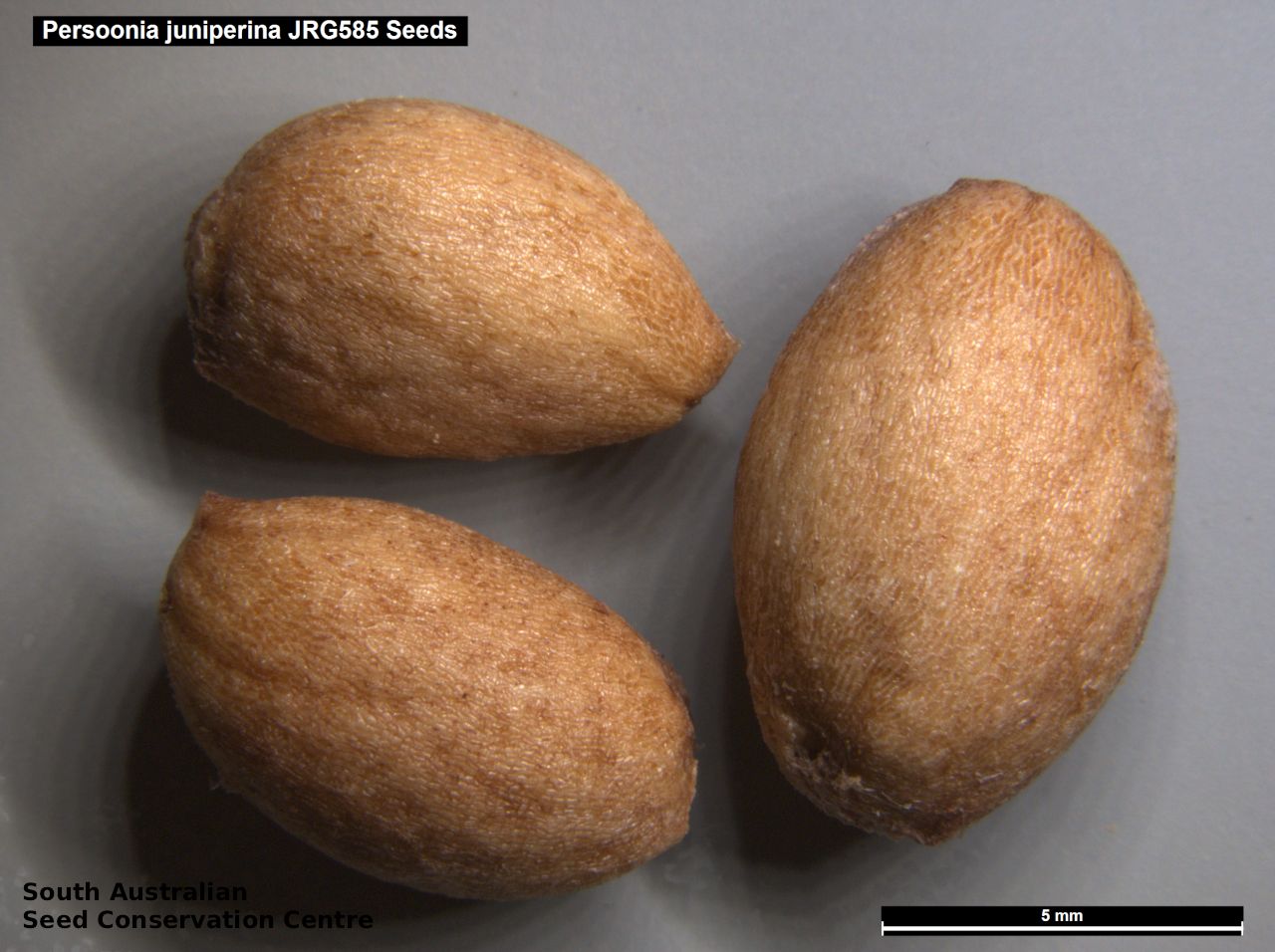
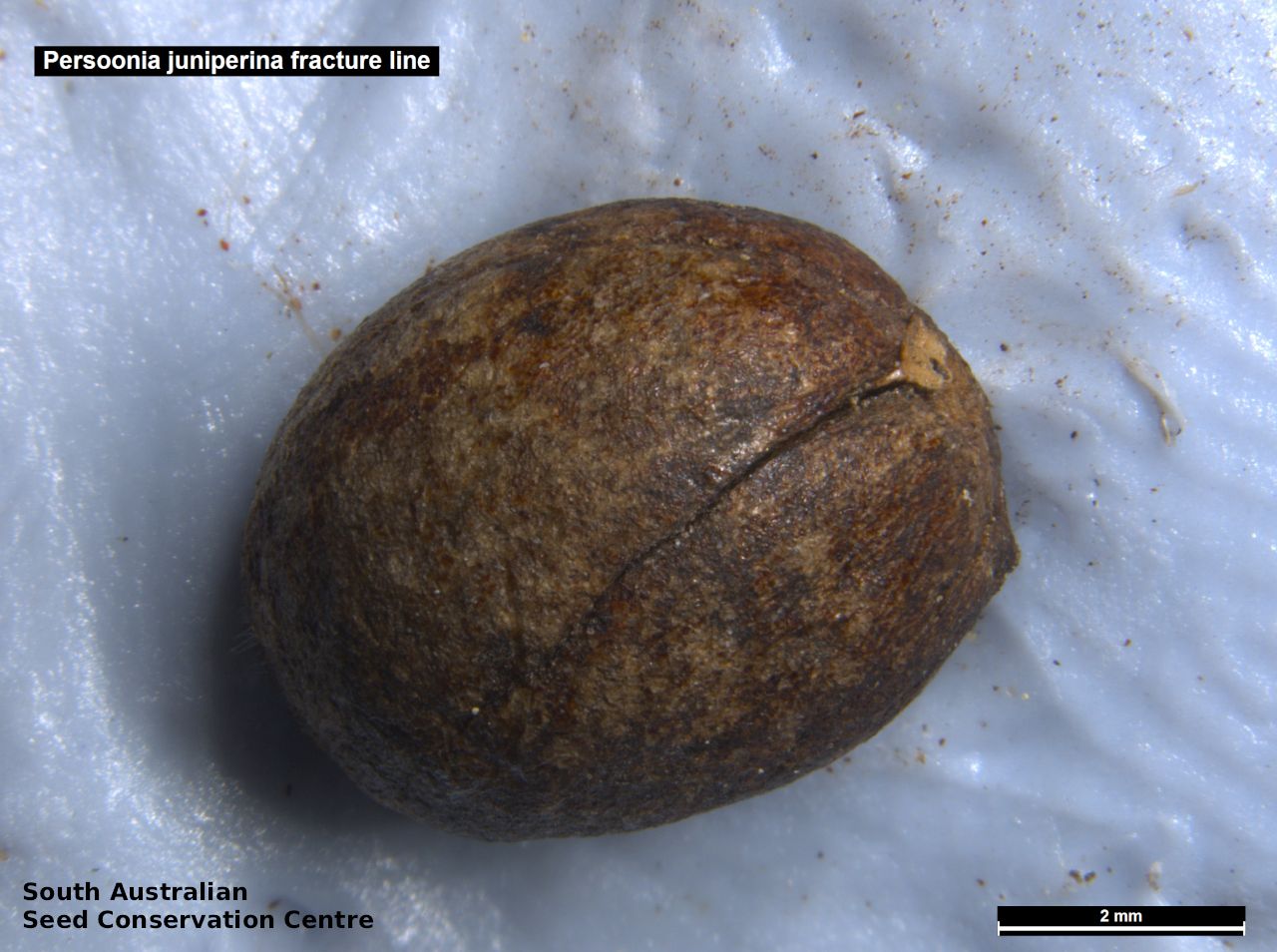

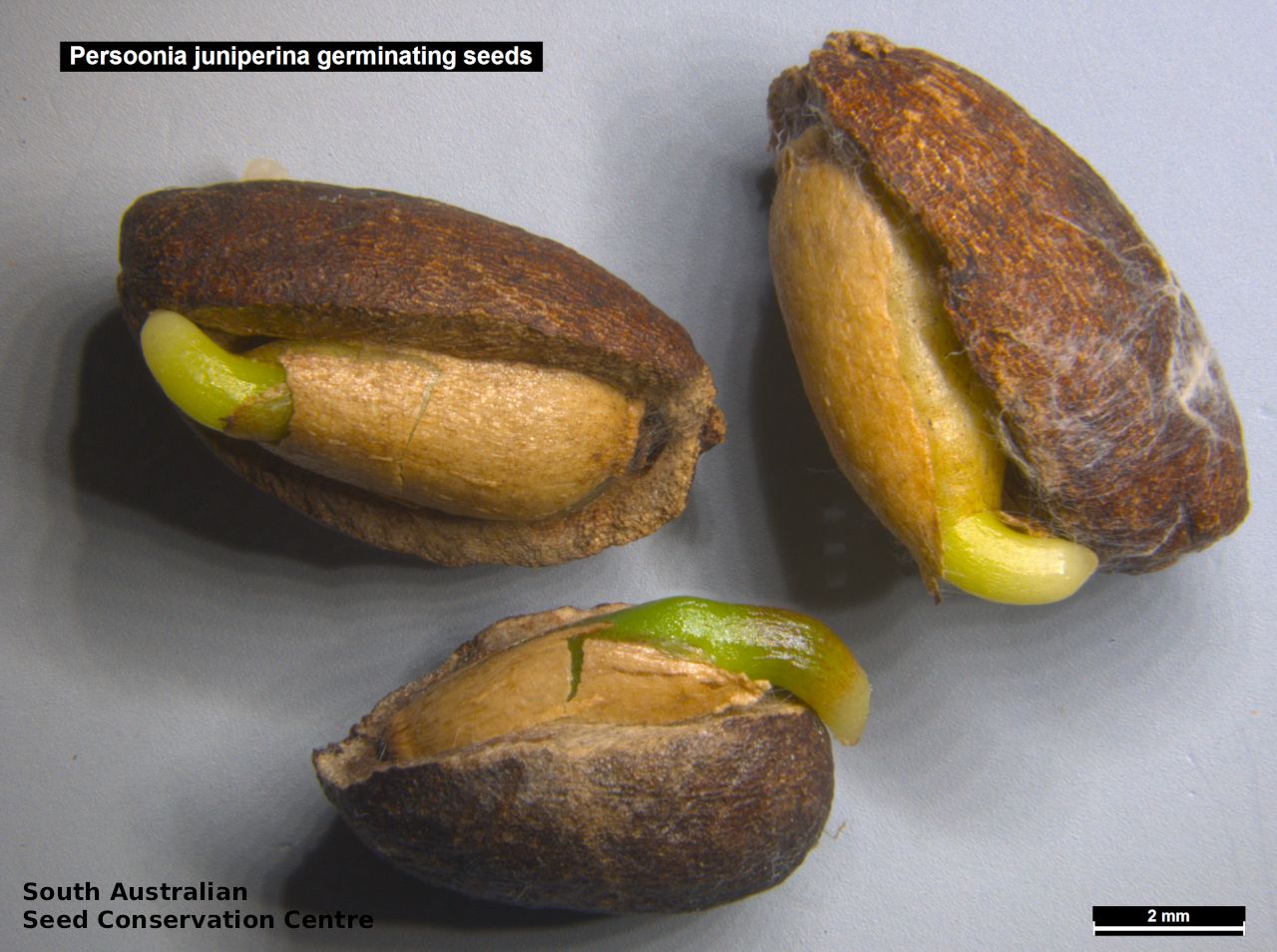
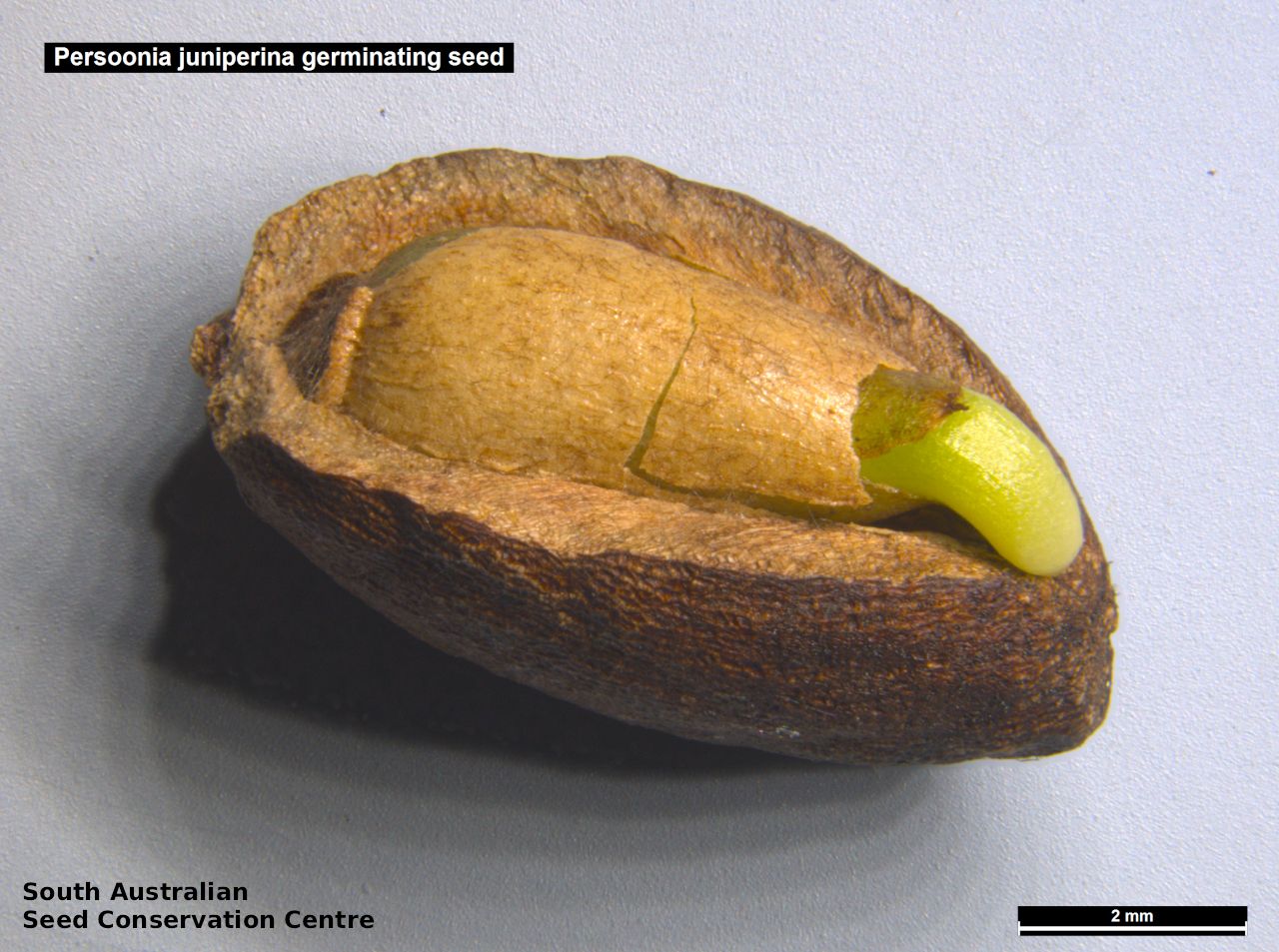
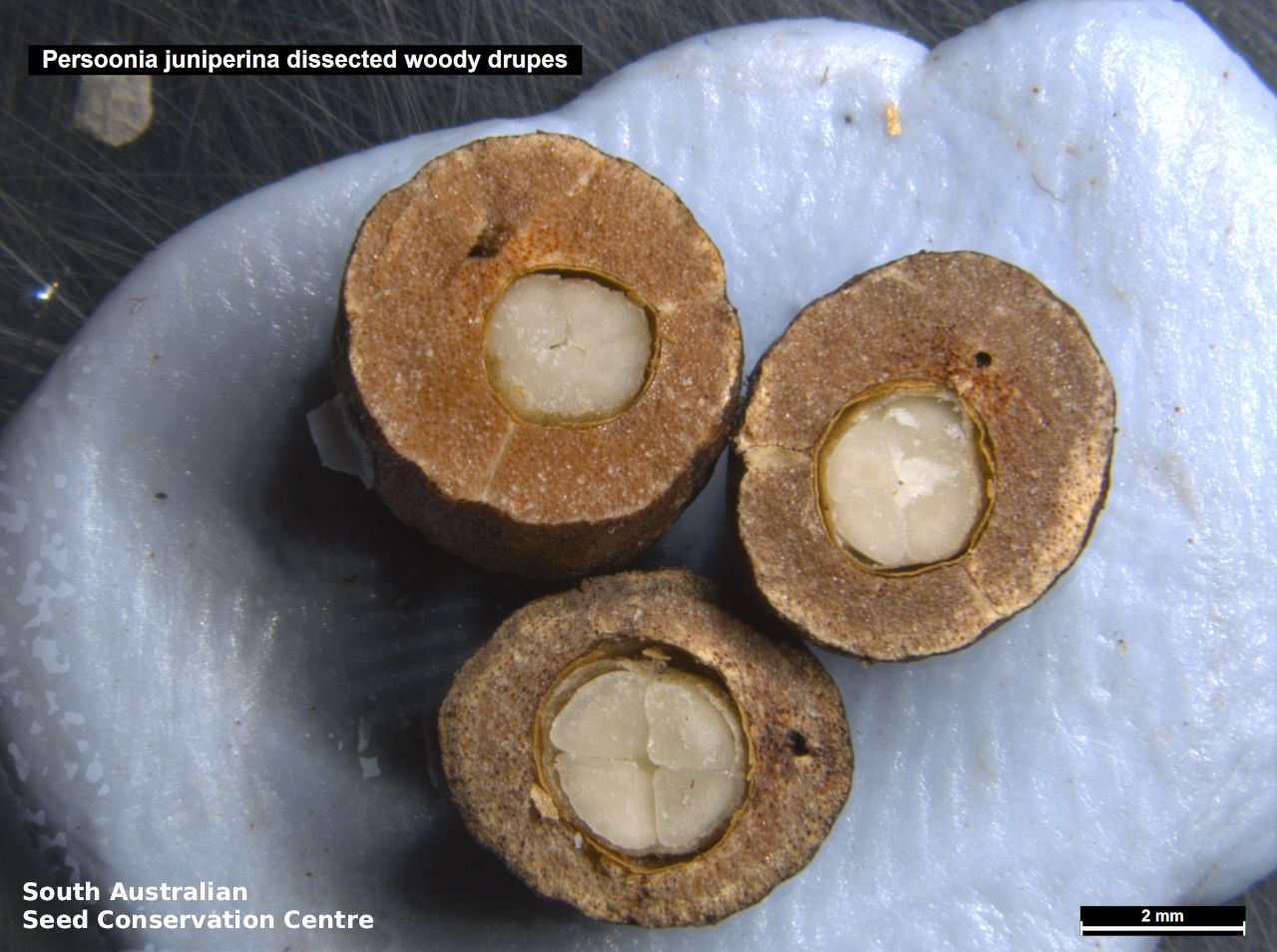
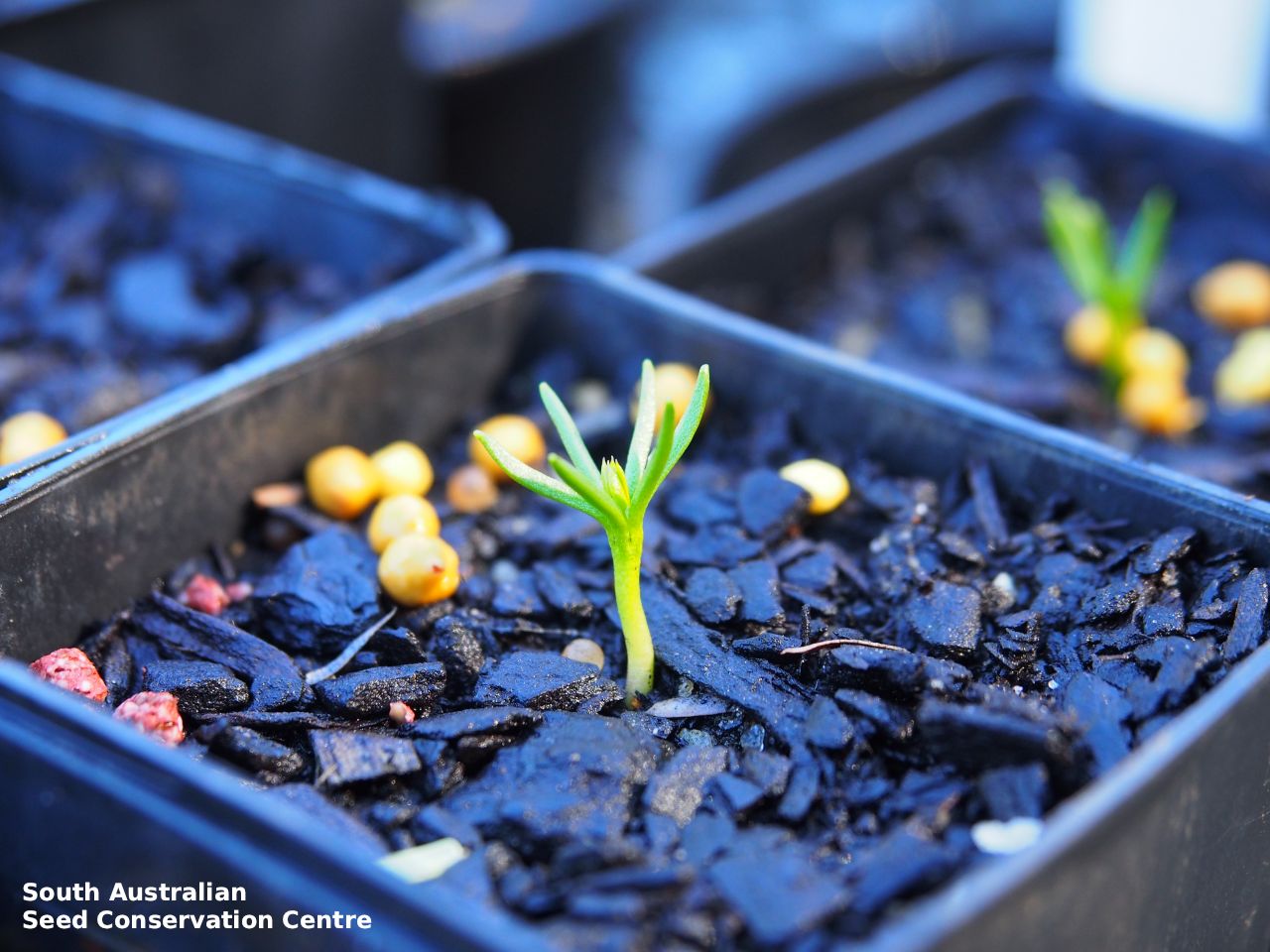


Botanical art
Common names
Prickly Geebung
Geebung
Etymology
Persoonia named after Christian Hendrik Persoon (1755 -1837), a South African born Dutch botanist, mycologist and author of Synopsis plantarum. Juniperina means juniper-like, referring to the species resembling plants from the genus Juniperus.
Distribution and status
Found in the southern Mount Lofty Ranges and the South-east in South Australia, growing in heathlands and heathy woodlands. Also found in New South Wales, Victoria and Tasmania. Native. Common in South Australia. Uncommon in New South Wales. Common in the other States.
Herbarium regions: Southern Lofty, South Eastern, Green Adelaide
NRM regions: Adelaide and Mount Lofty Ranges, South East
AVH map: SA distribution map (external link)
Plant description
Erect to spreading spiky shrub to 2 m high, with hairy young branches. Leaves alternate, linear; to 30 mm long and 1.5 mm wide;, straight, rigid, pungent tip; bright green, glabrous to densely hairy when young. Inflorescence with yellow flowers, solitary, mostly in leaf axils. Flowering between December and February. Fruits are yellow-green to purplish fleshy ovoid fruit to 10 mm long and 8 mm wide.
Seed collection and propagation
Collect seeds between February and April. Collect fruits that are maturing, starting to turn from green and hard to yellowish or purple and soft. Place the fruits in a bucket of water and rub the flesh off with your hands. Drain the water and wash again if required to remove all the flesh. Then spread the wet seeds on some paper towel and leave to dry. Store the seeds with a desiccant such as dried silica beads or dry rice, in an air tight container in a cool and dry place. The viability of seed lots was increased by immersing seeds in water and removing the floating seeds. From two collections the viability of sinking seeds was 50% and 80%.
This species has physiological dormancy and is difficult to germinate. However, high levels of germination were observed after the woody endocarp was gently prised open along the fracture line to expose intact seeds. Germination levels were highest after treatment with gibberellic acid.
Germination research fro this species was supported by AMLR NRM in 2017.